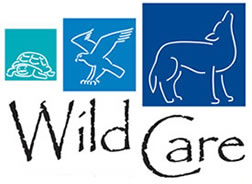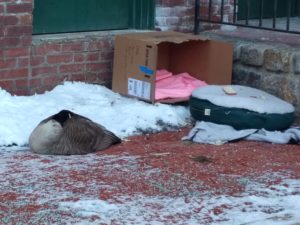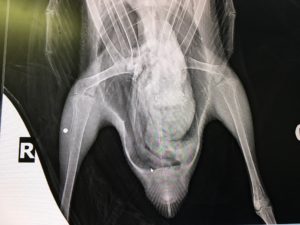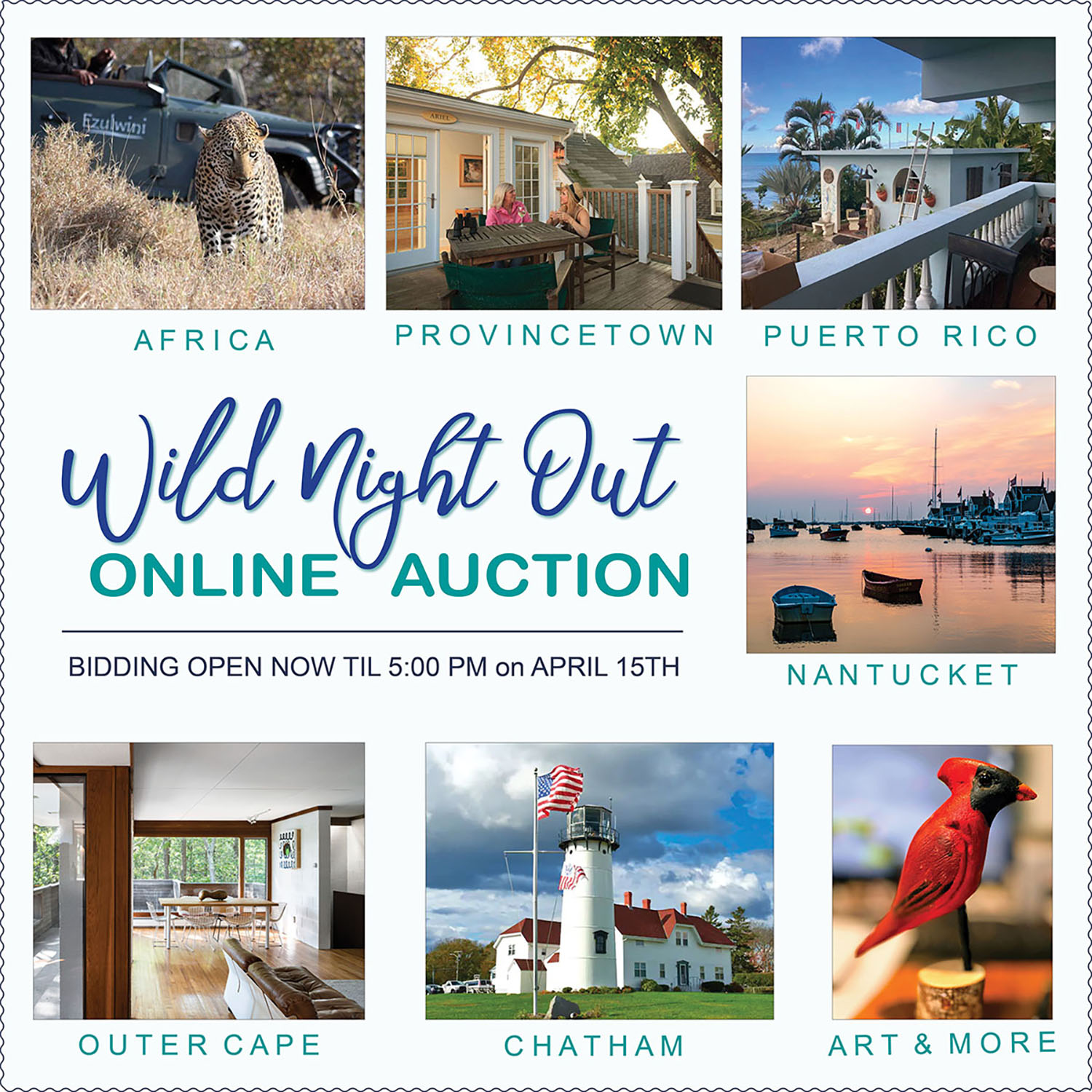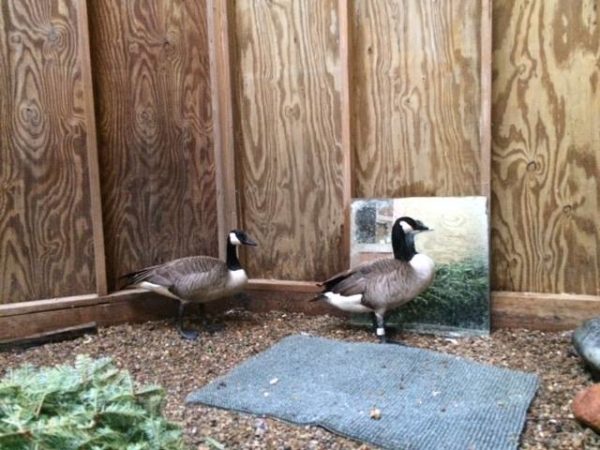
Two Geese Are Better Than One
By Jennifer Taylor, Animal Care Coordinator
Two days after Christmas we received a Canada Goose who came in uncoordinated, unkempt and unable to bear weight on its right leg. A concerned woman had been watching, worrying, and feeding this bird for three weeks prior.
On New Year’s Day we received a call about a Canada Goose in similar shape (without the limp). This bird was had also been observed for some time by caring people. The rescuer had gotten the bird into a box and drove it to Wild Care.
Although there was a closer wildlife center to bring the 2nd bird to, I wanted the goose to come to us because I knew our other goose would do much better having a buddy. When flocking birds are all alone, it is very stressful for them and does not help promote healing in a clinic setting. The very moment the New Year goose entered our clinic the other goose started honking. It knew one of its kind had just arrived!
Both birds showed classic signs of lead poisoning. They were both x-rayed to see if they still had lead shot or fishing weights in their GI tract. If they had, then the procedure would be to remove the metal first before we could treat them. They were both lucky to be lead-free in their gut, but the Christmas Goose did have a shotgun pellet in its right thigh.
The pellet was successfully removed by Eric Stone, DVM, of Eastham Veterinary Hospital. After both geese were treated for parasites, they were finally put together in our large aviary. They bonded, and the limping goose proved to be the one in charge protecting the other when we entered their space. They shared the kiddie pool, the large outdoor heating pad, and the dishes of food. The lead chelation therapy reduced their lead count to acceptably low numbers and their neurological symptoms went away. At one point the limping goose escaped into the flyway of our large aviary, and Niki, one of our Wildlife Rehabilitators had to chase it twice around before she could catch it. TIME TO LET THEM GO!
Amy released them together the day after goose hunting season ended.
Here is our New Year Goose the day he was captured. People had brought it food and bedding.
This xray shows the shotgun pellet lodged in the goose’s right thigh. It did not effect the bone. Lead pellets do not cause lead poisoning when inside the muscles of the animal. If this goose had died, and a coyote ate the leg with the pellet, that coyote would begin to ingest the lead through its GI tract and subsequently become poisoned.
Wild Night Out Online Auction
READY, SET, BID… We are so excited to announce that our Wild Night Out Online Auction is now live!
READ ALL NEWS
CALENDAR OF EVENTS
04 April, 2024
Wild Night Out Online Auction
EVENT DETAILS
05 April, 2024
Wild Night Out
EVENT DETAILS
28 February, 2024
Wildlife Winter/Spring Talk Series
EVENT DETAILS

DID YOU KNOW??
Wild Care has a state-of-the-art seabird therapy pool, which allows seabirds and waterfowl to exercise on running water. This will help our bird friends recover more quickly so they can get back to their watery habitats!
